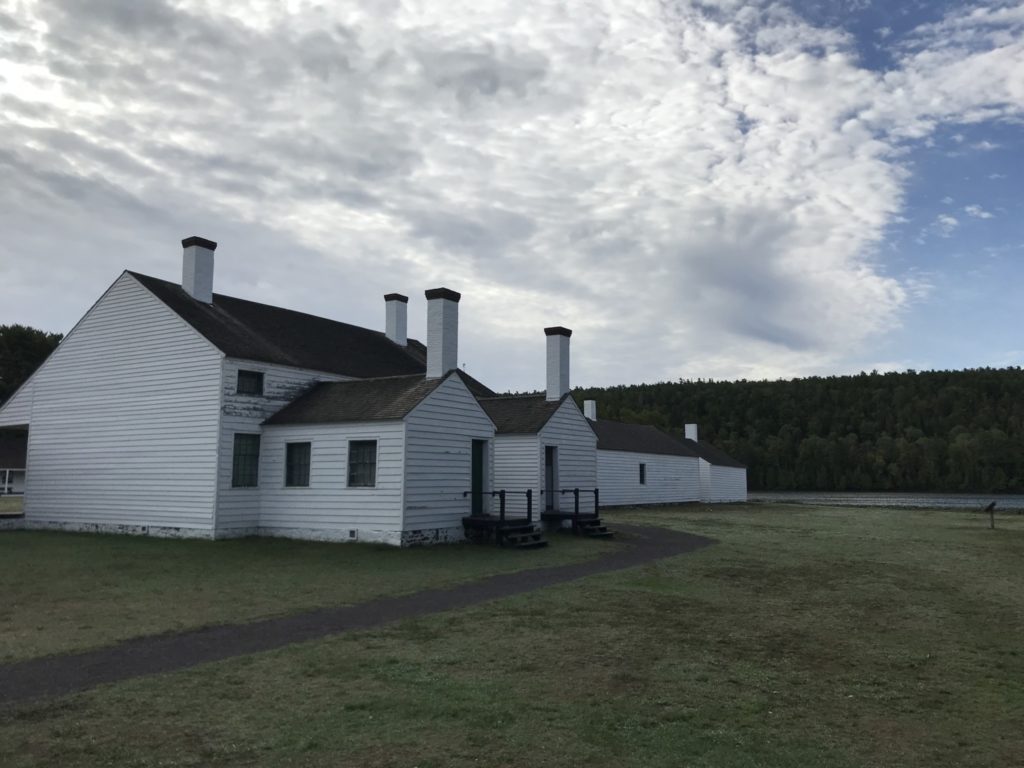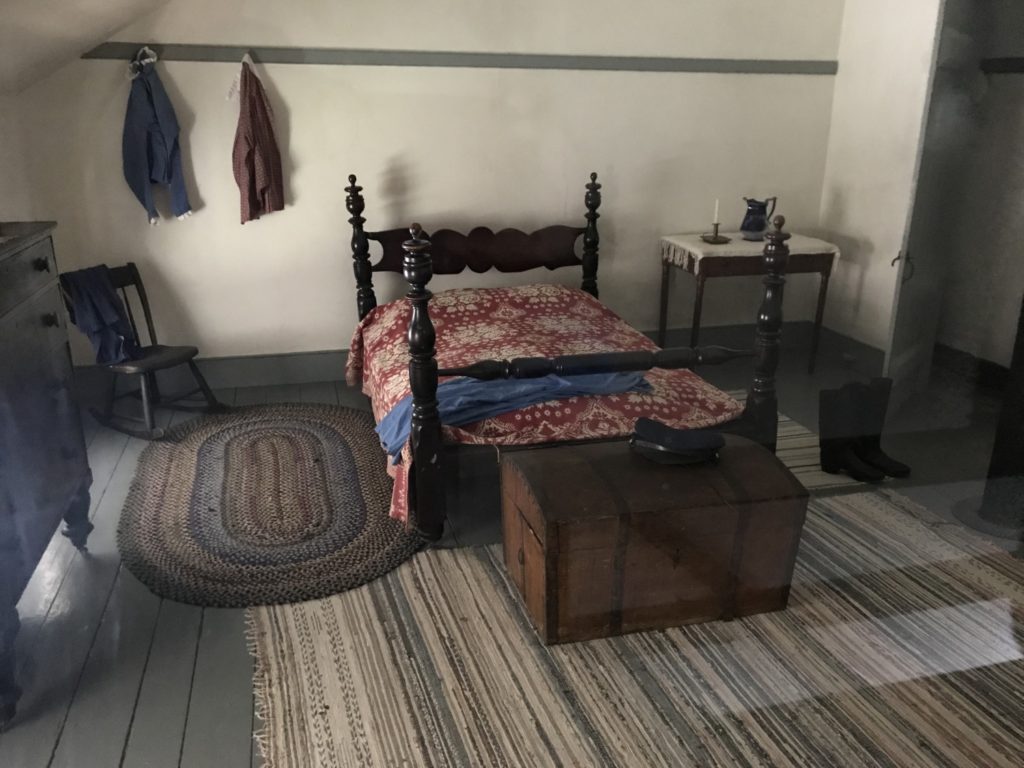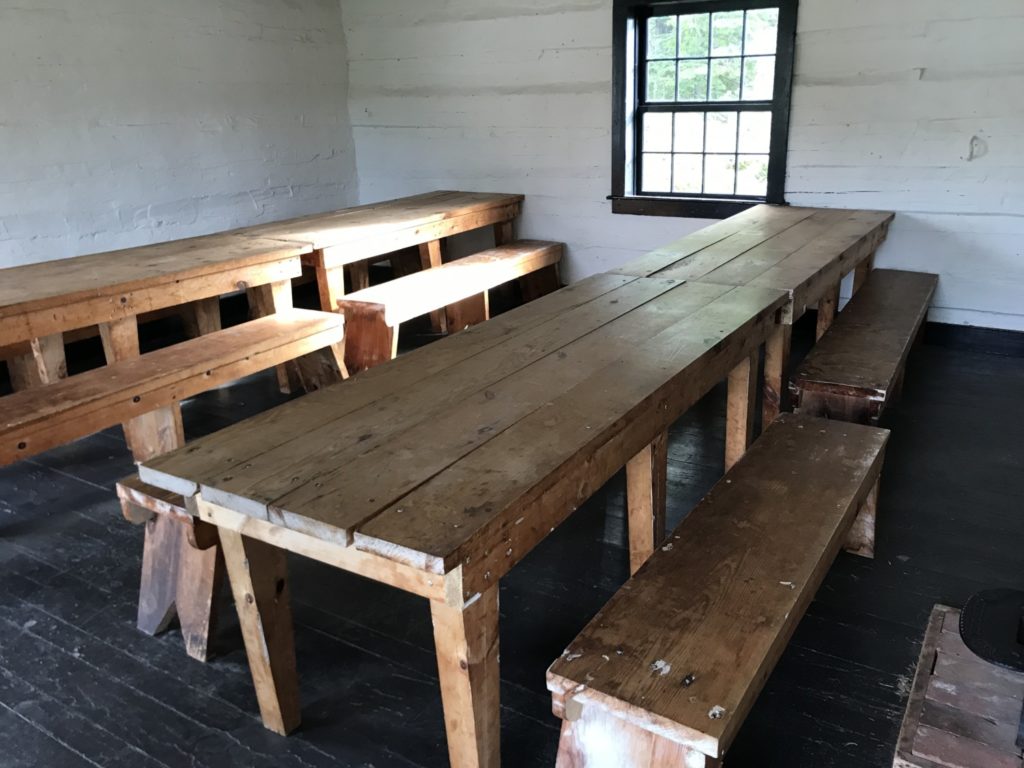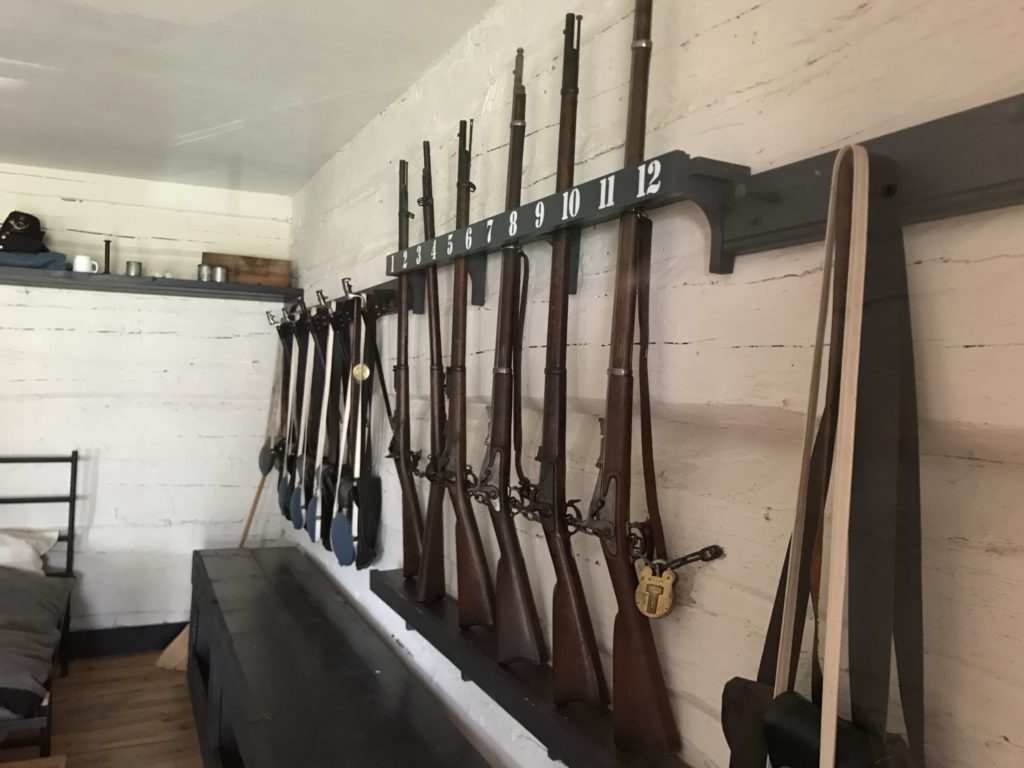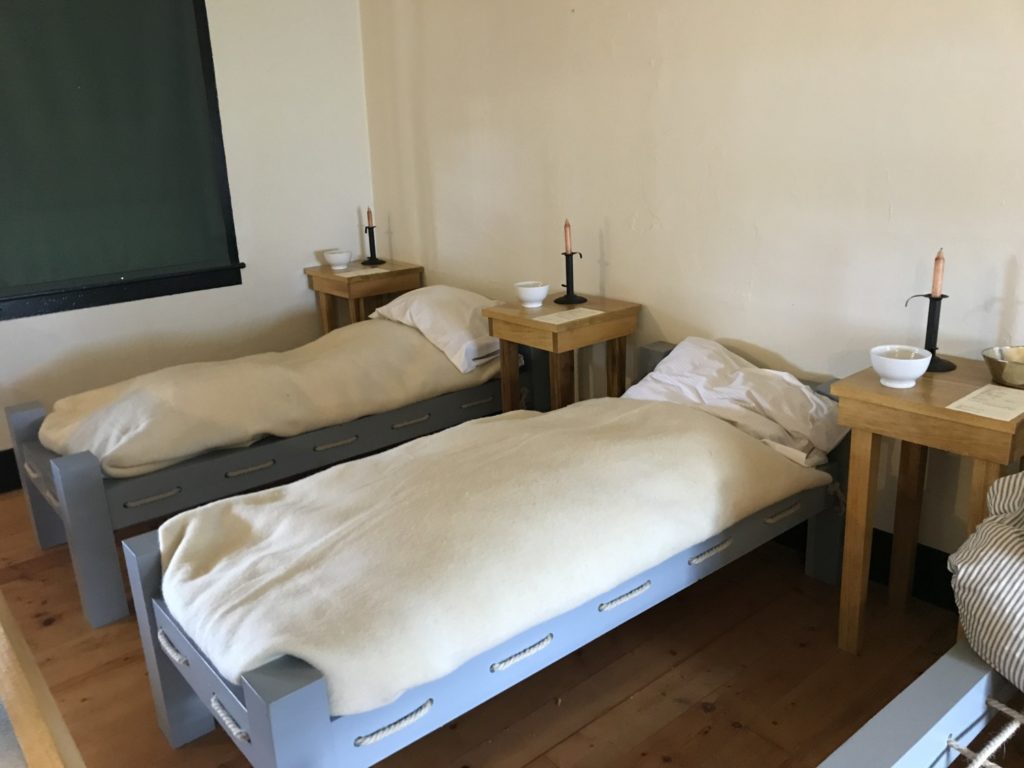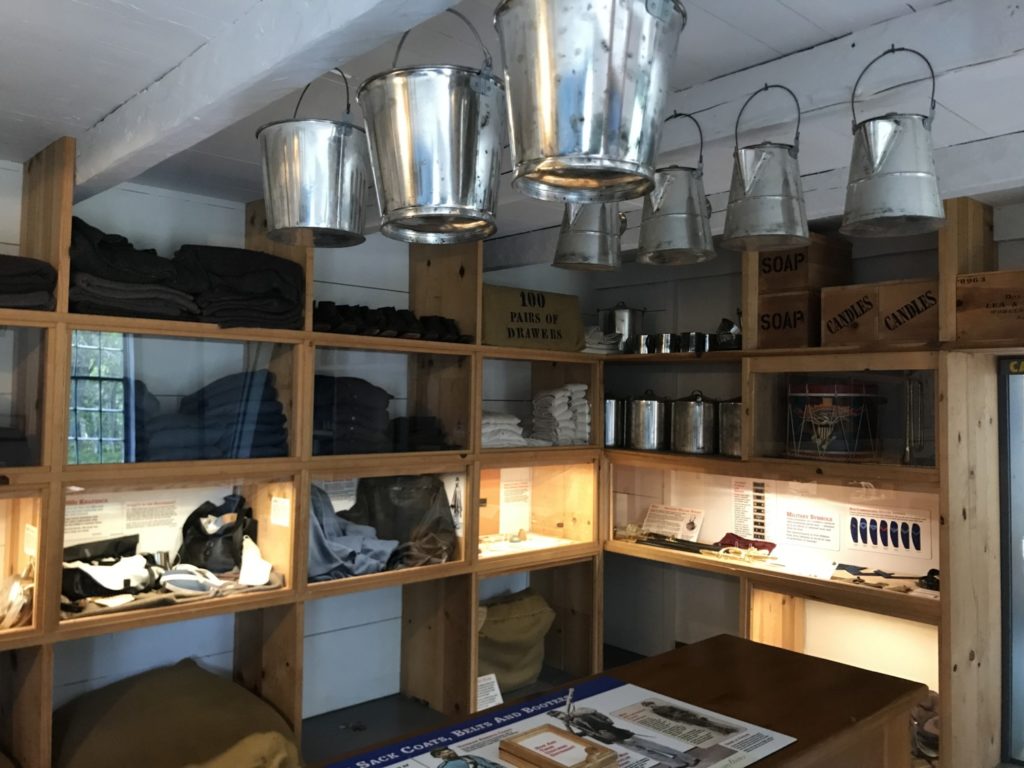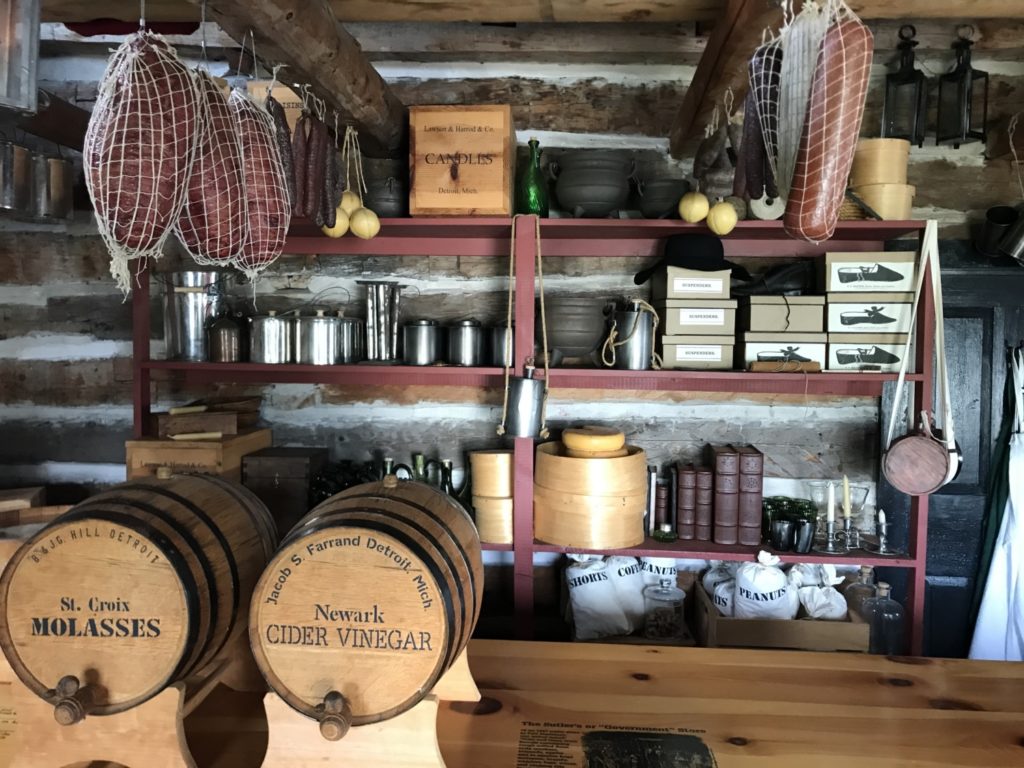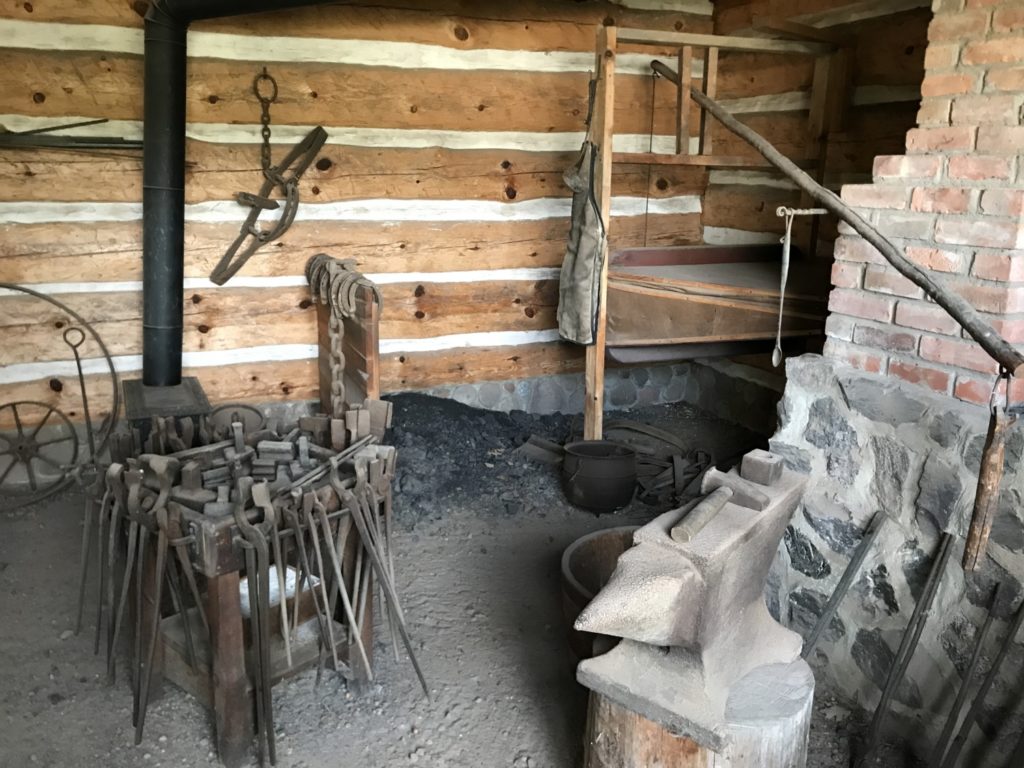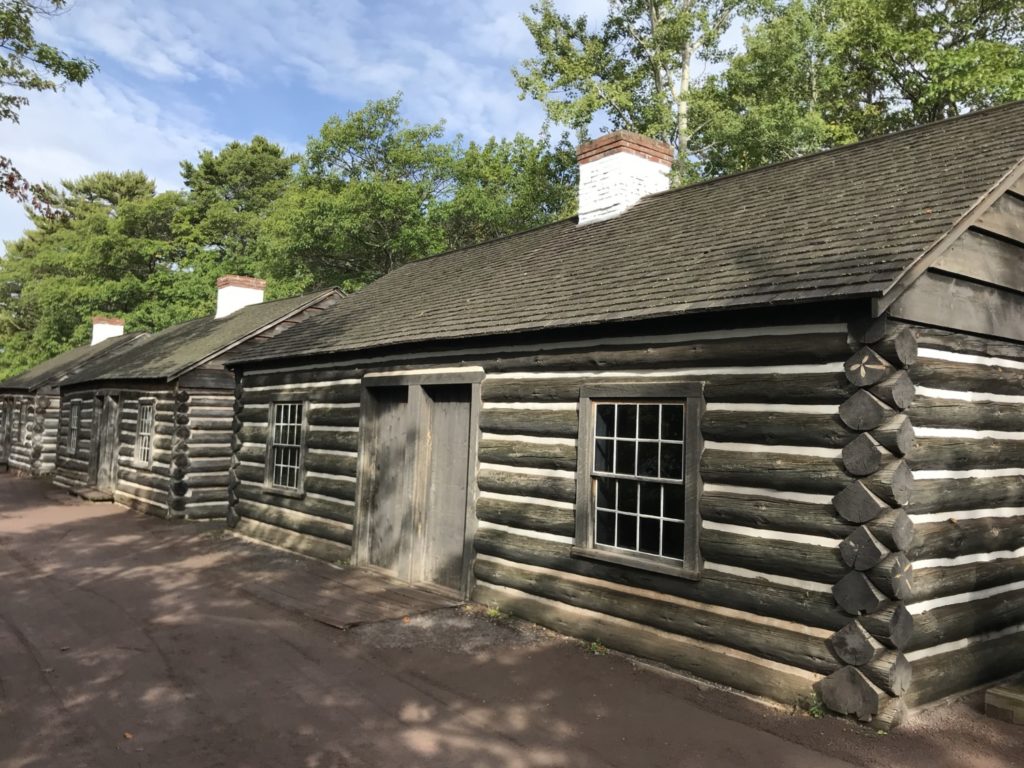Fort Wilkins Historic State Park includes the campground where we stayed in Copper Harbor. It also includes another large campground on the east side of park, which is only open through Labor Day. In between the two campgrounds lies the reconstructed and restored Fort Wilkins Historic State Park. This is an unusual pairing: state parks are usually either historic (like Fort Michilimackinac) or recreational. Fort Wilkins Historic State Park is both.

Fort Wilkins was built in 1844, after copper was discovered on the Keweenaw Peninsula. The peninsula was the homeland of several bands of Chippewa and Ottawa. Much of Michigan had been ceded by the Native Americans in the 1836 Treaty of Washington. The Keweenaw Peninsula remained in native control because it was thought to be too remote for settlers. When copper mining became a possibility, eastern business interests moved in. Fort Wilkins was built, not to enforce the terms of the treaty, but to protect the miners.
Fort Wilkins was used as a base for the Army from 1844 until 1870. It was extremely remote and there were no roads through the Upper Peninsula. The only way to get to the fort was on foot or by the water of Lake Superior. Most of the soldiers considered it a difficult place to be stationed. They had two main problems: the winter weather and boredom. In winter the Fort was completely snowed in and isolated. And there wasn’t much to do at any time of year.
The fort was restored in the 1920’s and 1930’s by the state of Michigan. The Michigan History Center provides living history interpreters from mid-June to mid-August. Although we were sorry to have missed the living history interpreters, we enjoyed walking around the restored fort. All the buildings were open, even though we didn’t see anyone who worked there. Objects in the buildings were protected by plexiglass partitions that kept visitors out. The fort is open from 8:30 until sunset every day from the middle of May through the middle of October. It is closed the rest of the year.
All of the buildings were set up as if the soldiers were still living there. We were impressed by the quality of the restoration. Most of the 19 buildings surround the parade grounds and are immaculately kept up. We saw officers quarters, the commissary, the hospital, a blacksmith shop, barracks, and the mess. There are interpretive signs all around the grounds and a museum building that gives the history of the fort. I was amazed at how nicely the fort was preserved considering how many visitors were there without any staff.
The highlight of Fort Wilkins Historic State Park, for me, was the camp store. This was the only place we saw an employee. As soon as we walked in to the camp store, I smelled the most delicious odor. I asked the store employee what it was and she laughed and said it was the fresh waffle cones she was making. There was an ice cream counter and a place to order sandwiches and pizza.

The store went beyond the usual camp store amenities. It also had lots of apparel and other souvenirs. We saw puzzles, games, magnets, and rocks. Meanwhile, as we were wandering around, the smell of the waffle cones drifted enticingly. Finally, I asked the woman in the store if I could just buy a waffle cone. She said “Sure, it is $0.50.” For that price I was glad to buy one. She told me that a lot of campers come in just to buy a waffle cone, so it was a familiar request. The cone was, of course, delicious, and well worth the two quarters I paid.
Fort Wilkins Historic State Park is part of the Keweenaw National Historical Park. That was the primary reason we had decided to come to the end of the Keweenaw Peninsula. The fort was definitely worth a visit. Exploring beautiful and remote Copper Harbor and enjoying that waffle cone made the stay even better.

